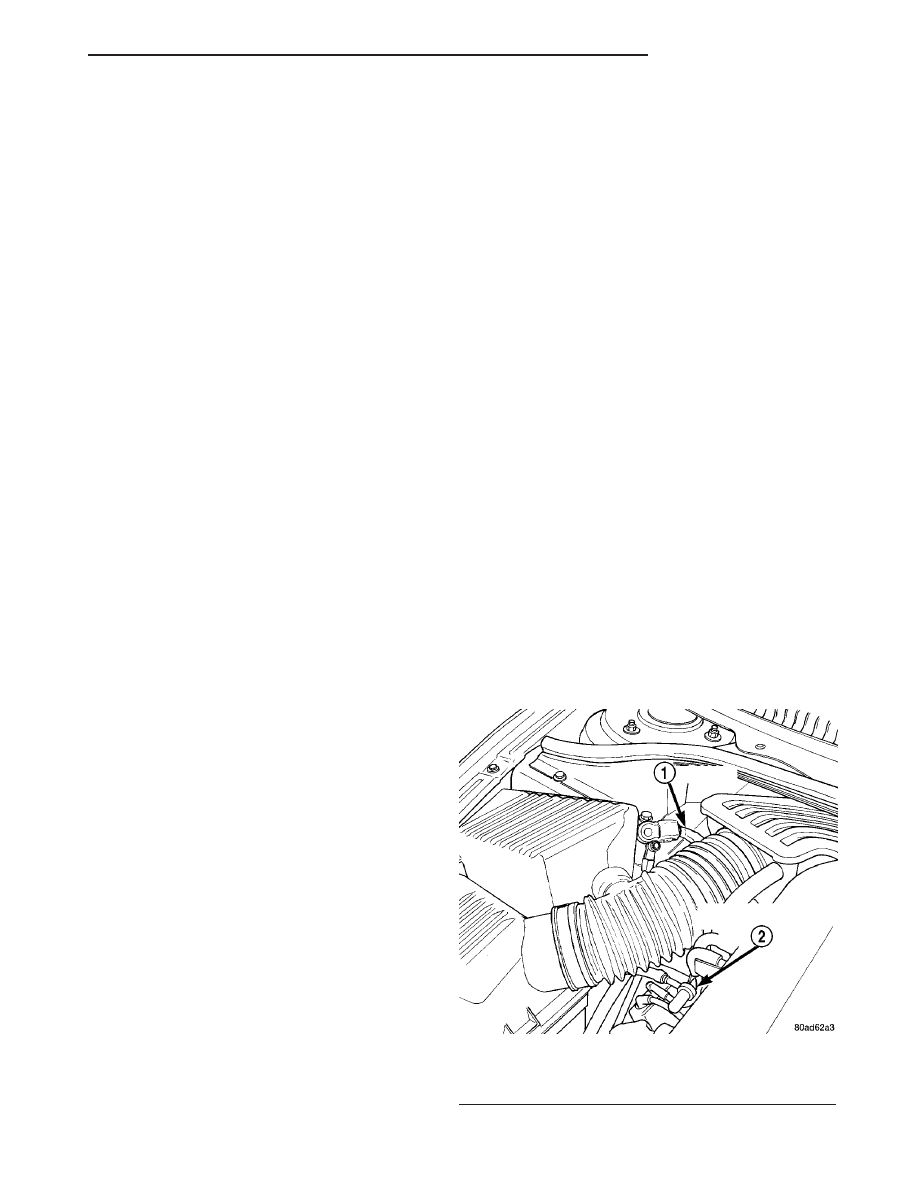Chrysler 300M, Dodge Interpid. Manual - part 270

INSTALLATION
INSTALLATION - 2.7L
(1) Lightly lubricate the fuel injector O-rings with
a couple drops of clean engine oil.
(2) Install retaining clips on fuel injectors.
(3) Push injectors into fuel injector rail until clips
are in the correct position.
(4) Position fuel rail over cylinder heads, and push
rail into place. Tighten fuel rail mounting bolts to 11
N·m (100 in. lbs.) torque.
(5) Connect the fuel supply tube quick connect fit-
ting to the fuel rail. Refer to Quick Connect Fittings
in the Fuel Delivery Section.
(6) Connect the electrical connectors to the fuel
injectors.
(7) Install intake manifold plenum. Refer to the
Engine section for information.
(8) Connect negative cable to battery.
INSTALLATION - 3.5L
(1) Lightly lubricate the fuel injector O-rings with
a couple drops of clean engine oil.
(2) Install retaining clips on fuel injectors.
(3) Push injectors into fuel injector rail until clips
are in the correct position.
(4) Position fuel rail over cylinder heads, and push
rail into place. Tighten fuel rail mounting bolts to 28
N·m (250 in. lbs.) torque.
(5) Connect the fuel supply tube quick connect fit-
ting to the fuel rail. Refer to Quick Connect Fittings
in the Fuel Delivery Section.
(6) Connect the electrical connectors to the fuel
injectors.
(7) Install intake manifold plenum. Refer to the
Engine section for information.
(8) Connect negative cable to battery.
FUEL TANK
DESCRIPTION
The fuel tank is constructed of a plastic material.
Its main functions are for fuel storage and for place-
ment of the fuel pump module. The tank is made
from High density Polyethylene (HDPE) material.If
equipped with ORVR (Onboard Refueling Vapor
Recovery) it has been added to the fuel tank to con-
trol refueling vapor emissions.
OPERATION
All models pass a full 360 degree rollover test
without fuel leakage. To accomplish this, fuel and
vapor flow controls are required for all fuel tank con-
nections.
All models are equipped with either one or two
rollover valves mounted into the top of the fuel tank
(or pump module).
An evaporation control system is connected to the
rollover valve(s)/control valve(Refer to 25 - EMIS-
SIONS
CONTROL/EVAPORATIVE
EMISSIONS/
ORVR - OPERATION) to reduce emissions of fuel
vapors into the atmosphere, when the tank is vented
due to vapor expansion in the tank. When fuel evap-
orates from the fuel tank, vapors pass through vent
hoses or tubes to a charcoal canister where they are
temporarily held. When the engine is running, the
vapors are drawn into the intake manifold. In addi-
tion, fuel vapors produced during vehicle refueling
are allowed to pass through the vent hoses/tubes to
the charcoal canister(s) for temporary storage (prior
to being drawn into the intake manifold). All models
are equipped with a self-diagnosing system using a
Natural Vacuum Leak Detection (NVLD). Refer to
the Emission Control System for additional informa-
tion.
INLET CHECK VALVE
All vehicles have an inlet check valve on the inside
of the fuel tank at the filler inlet
The valve prevents fuel from splashing back on
customer during vehicle refueling. The valve is a
non-serviceable item.
REMOVAL
(1) Release fuel pressure, Refer to Fuel System
Pressure Release Procedure.
(2) Disconnect battery cable (Fig. 13).
Fig. 13 Battery Cable
1 - BATTERY CABLE
2 - SERVICE VACUUM SUPPLY TEE
LH
FUEL DELIVERY
14 - 9
FUEL RAIL (Continued)